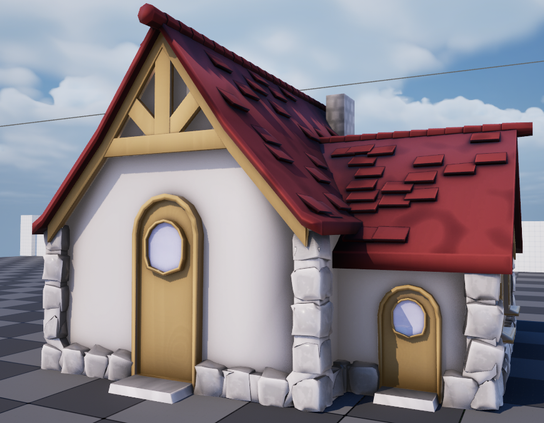So, wanna see something funky about 🐭⚔️?
When you see a house like this, it looks, you know, decent, right?
Well the colors are kinda faked on after the fact. What the artist ACTUALLY hands me, what the assets themselves are set up to look like, is this!
Any guesses why? Well you're likely wrong 🧵

